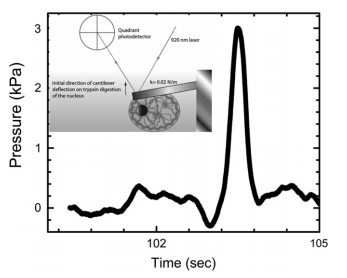Dynamics of chromatin decondensation reveals the structural integrity of a mechanically prestressed nucleus
Dynamics of chromatin decondensation reveals the structural integrity of a mechanically prestressed nucleus
A. Mazumder, T. Roopa, A. Basu, L. Mahadevan, and G. Shivashankar, Biophysical Journal , 95, 3028, 2008.




 Prof. L. Mahadevan
Prof. L. Mahadevan

